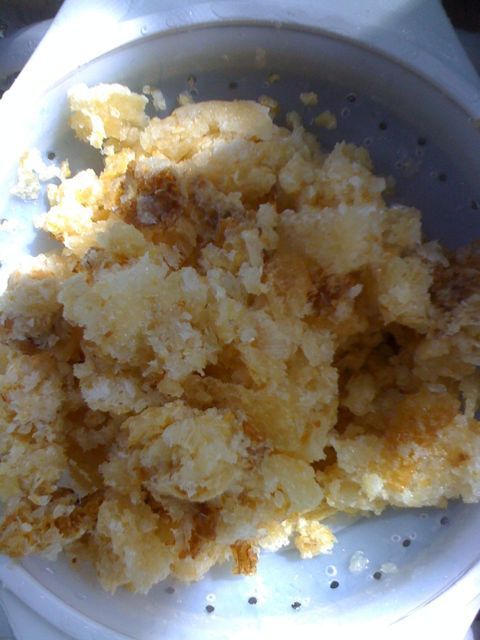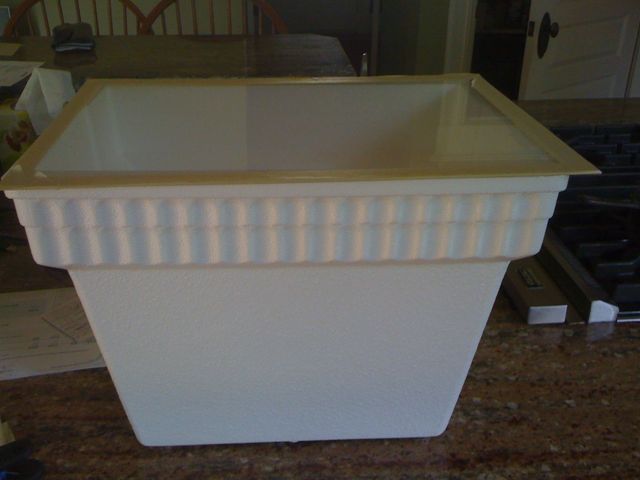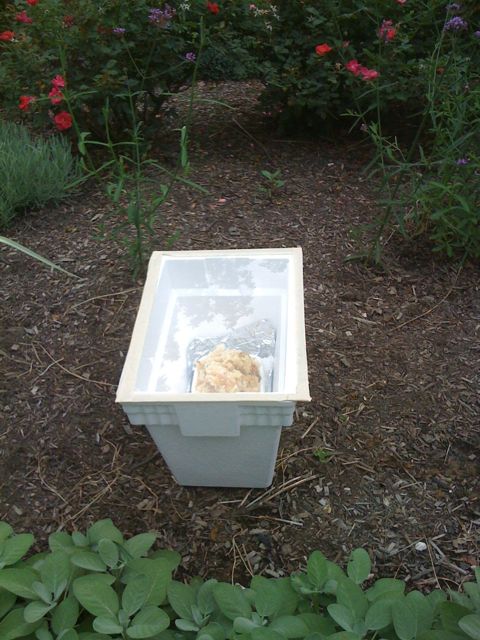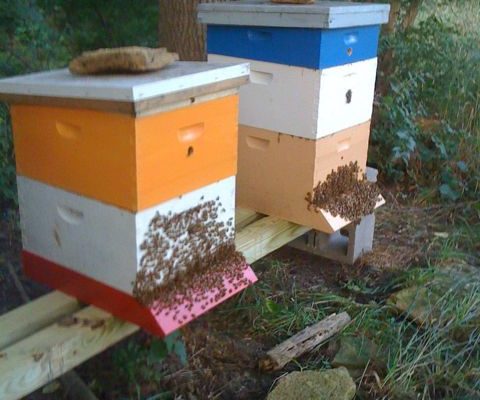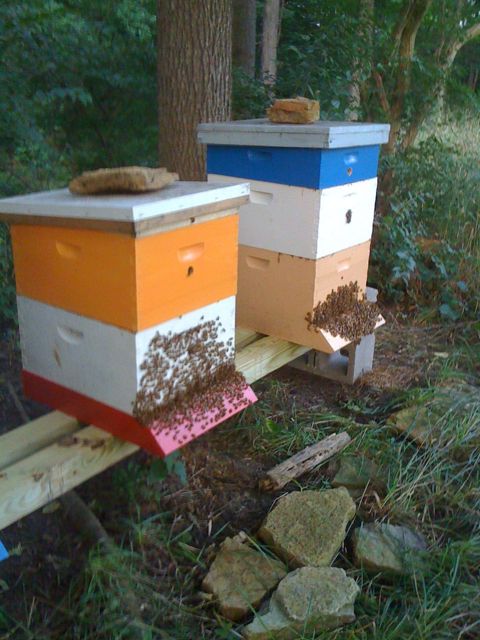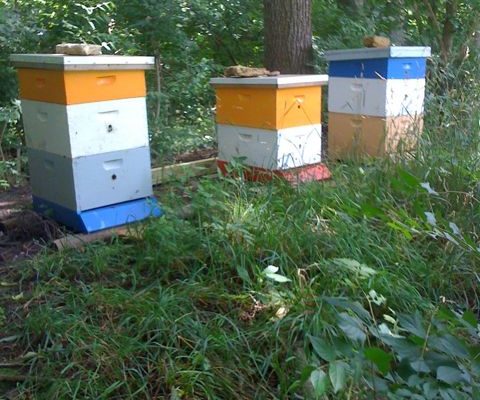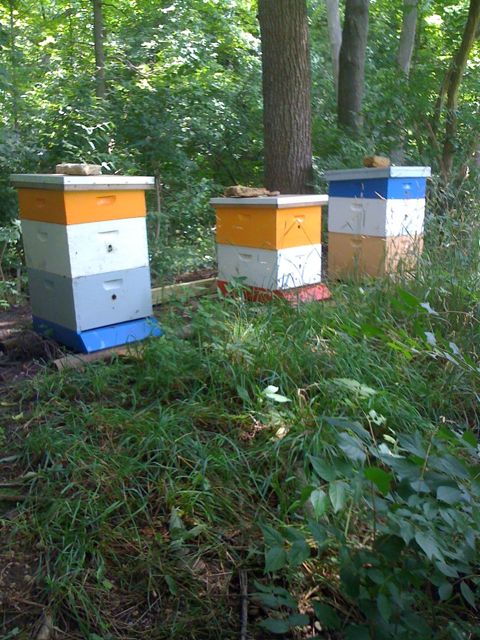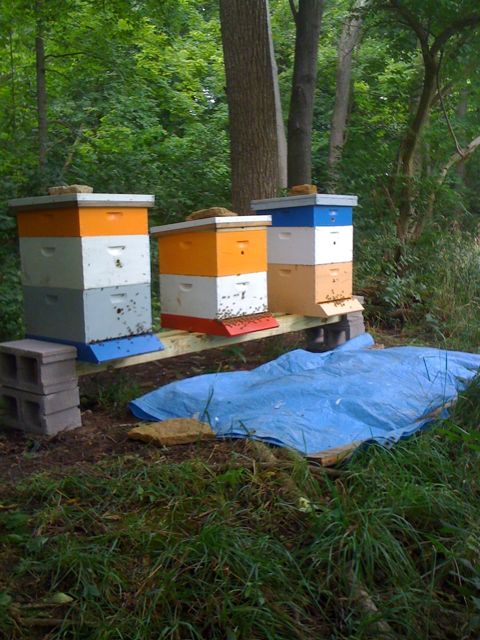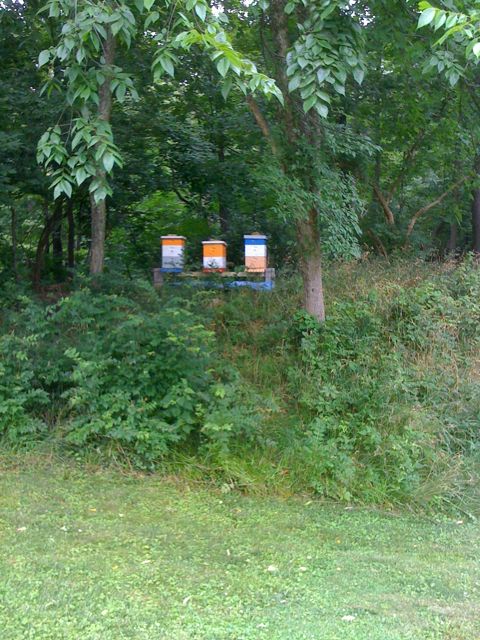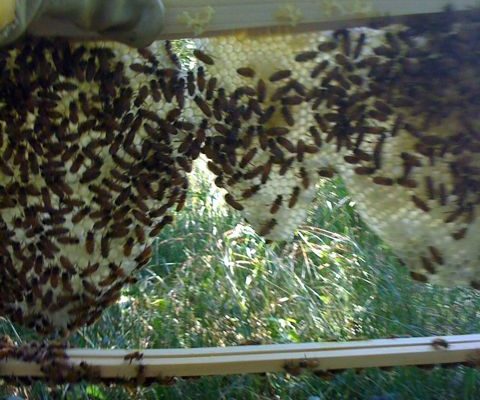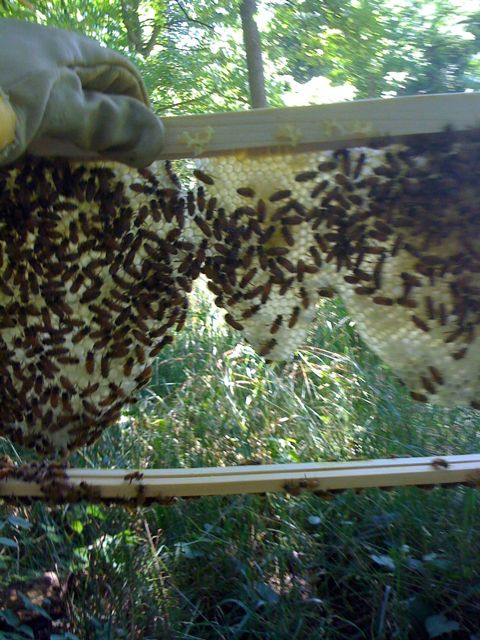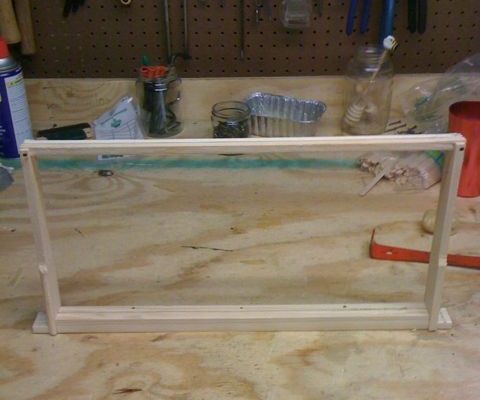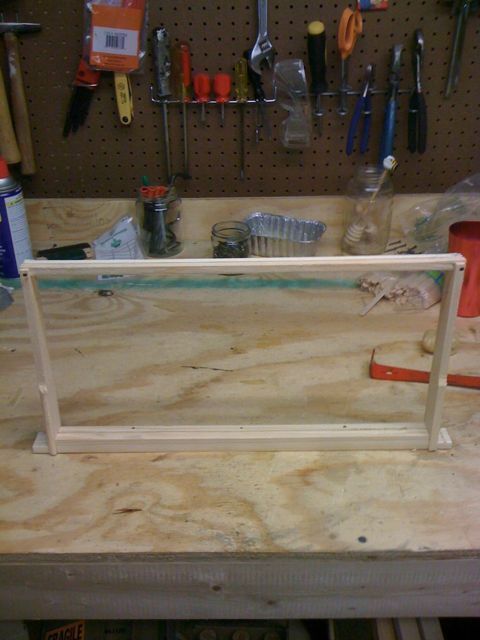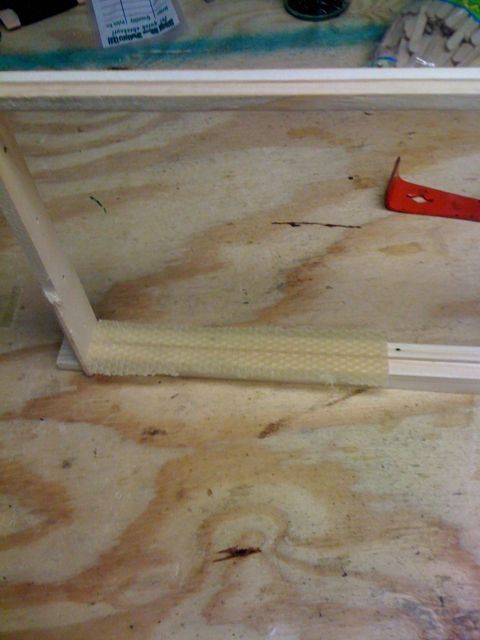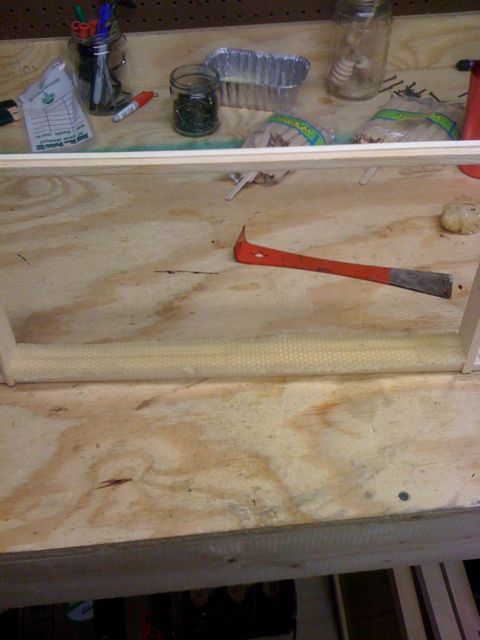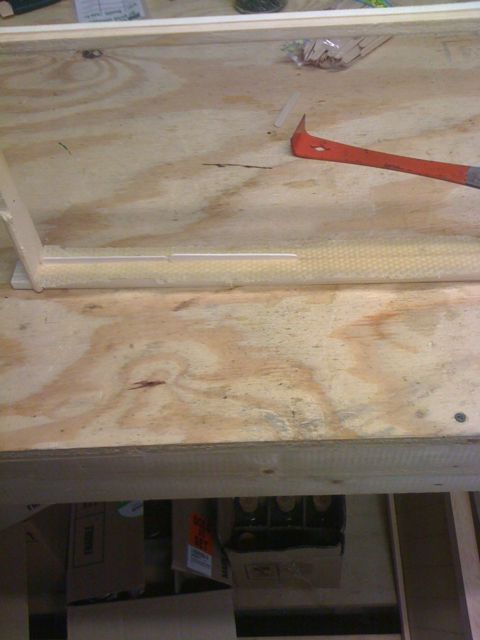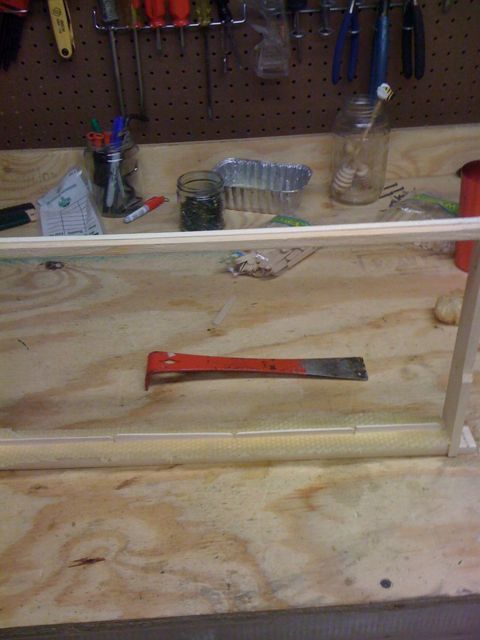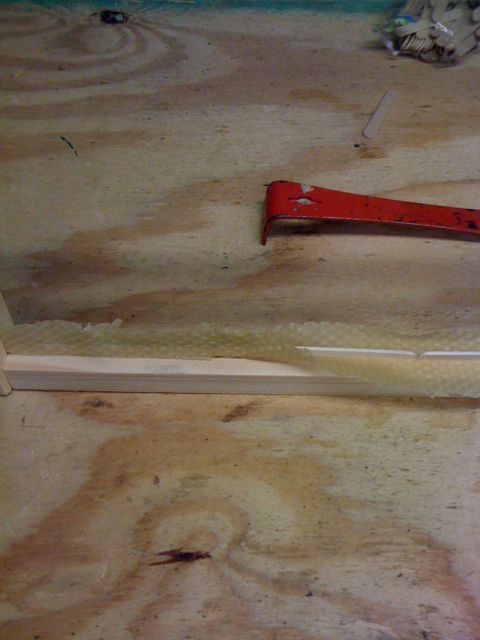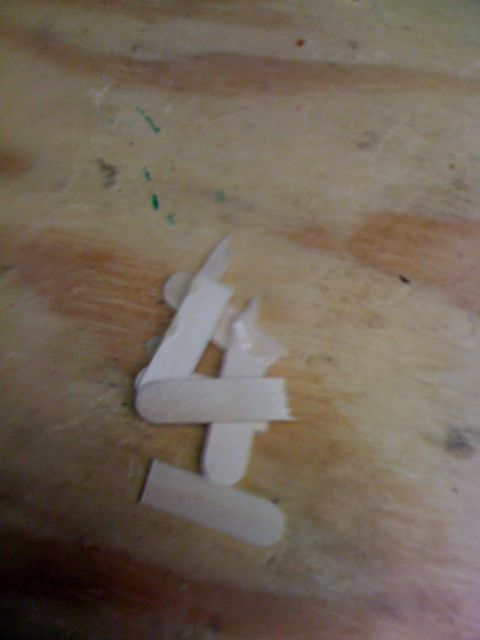I’ve got no honey to harvest, and I don’t want to keep bugging the bees. I want to leave them alone to do whatever they do. So, I decided to harvest some wax.
A few weeks ago I needed some wax, so I melted down some of the extra foundation I have; with the leftover wax, I made some awesome lip balm: melted beeswax, almond oil, and a little bit of vanilla. I love it! I keep it in a little pan in the kitchen, and I dip into it whenever I want (Deb’s ready to get the pan out of the kitchen, though). I plan to buy some of those lip-balm tubes and fill them with my concoction.
So, here are pictures of my wax preparations (thanks to instructions from Linda over at Linda’s Bees).
**
Loads of wax saved from my several frames of honey (this stuff smells so wonderful. I wish you could smell it, Reader).
A Styrofoam cooler and a piece of glass cut to fit as a lid:
A plastic container with about 1/2 inch of water in the bottom and covered with a doubled-up piece of paper towel.
The container goes into the foil-lined cooler, and the wax piles on top of the taut paper towel.
The glass goes on top, and the whole contraption goes out into the sun to heat up for the day.
Of course, the minute I set this thing in the garden, the sun disappeared. I’ll let you know how it works.


